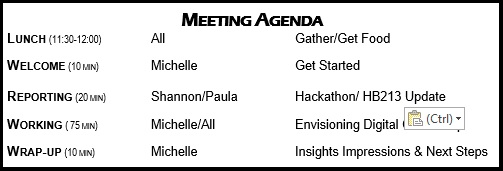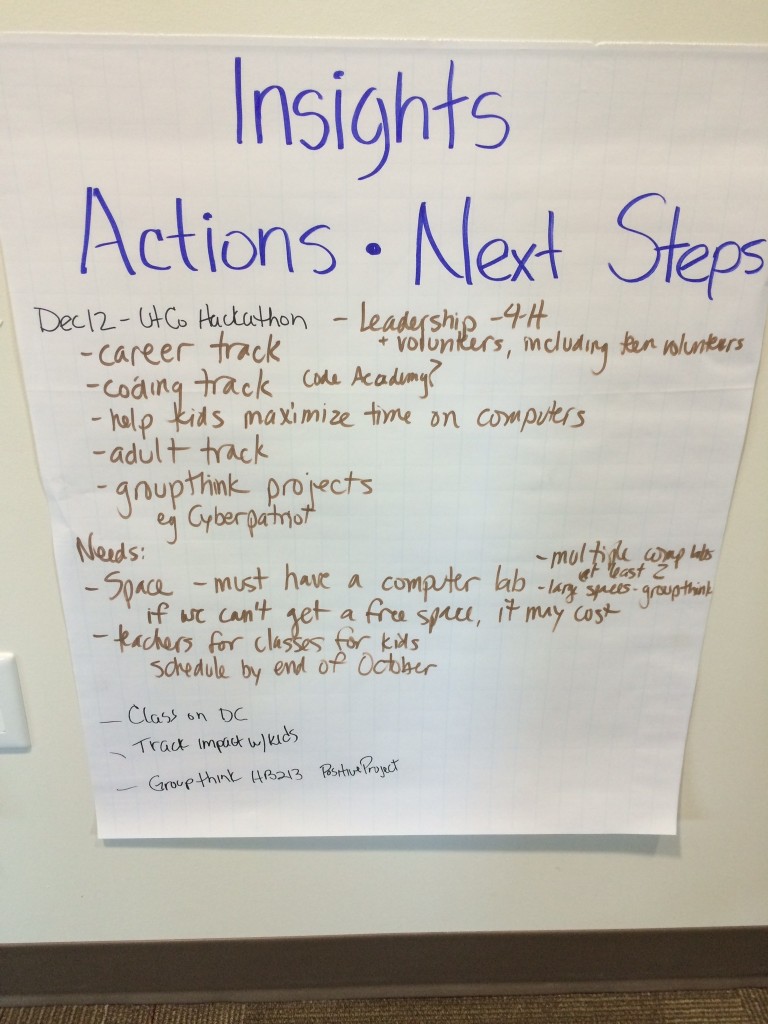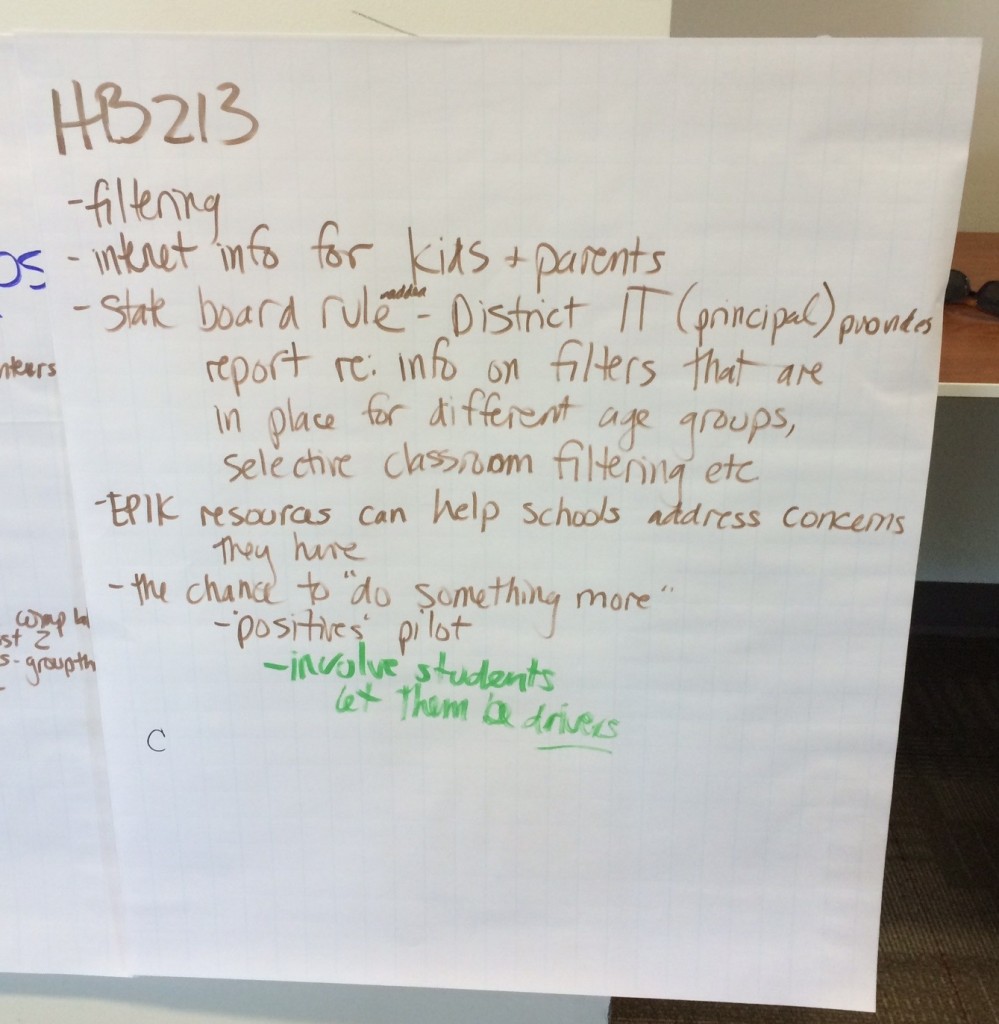Short-term Wins Report (9-9-15, Part 1)
We are excited to give you a report of our recent EPIK Alliance meeting, which was held on September 9, 2015 at the West Jordan Library. Many thanks to Carrie Rogers-Whitehead for hosting.
This update will come in two parts, via two separate posts. In this post, we will share highlights from the reports that were given on the short-term projects we have been working on (see this post or our most recent newsletter for background). The second post, Envisioning Digital Citizenship, captures the working part of the meeting. We welcome anyone who is interested you join that conversation. Our intent with this visioning process is to invite people to think beyond just preventative/protective concerns when it comes to kids and tech to consider proactive, positive ways that adults can encourage and engage youth in using tech for good. (To get your creative brain juices going, we invite you to watch this short documentary trailer, which captures an example of how youth can use their tech skills in positive ways.)
As an important note, EPIK founder, Jan Garbett, will be attending a Digital Citizenship summit in Connecticut in a few weeks, and we would love to have as much input as possible about Envisioning Digital Citizenship so that she can take Utah’s best ideas to the summit.
Our meeting began with reports from Shannon Babb, Utah County 4H STEM Coordinator, and Paula Plant, Utah School Land Trust Program Manager. Shannon reported on the Utah County Hackathon scheduled for December 12, and Paula reported on the collaborative efforts around the implementation of HB213. For each project below, I will include a summary of the project report, and then list the needs for each project that we hope those of you receiving this email might be able to help fill.
Utah County Hackathon
Report Summary
The Hackathon has a primary purpose to help underprivileged children and youth in Utah County have more access to STEM skill-building and networking opportunities. However, the event will be open to any youth in the area who are interested in attending. Shannon anticipates that anywhere from 900-2000 students could attend over the course of the day. Even without specific marketing efforts, there are already a couple hundred students who are interested!
The Hackathon will have different tracks designed for various age groups, including younger children. Track topics will include coding options, career exploration (with participation and support from tech community representatives), and Groupthink brainstorming sessions. There will also be classes for parents/adults.
Hackathon Needs
– The primary need is to locate and finalize a location for the event. Ideally, such a space would have a large meeting area (like a gym or auditorium), at least one (but preferably two) computer labs, and space for breakout sessions/classes. The hope is that space could be donated so as to not have to charge families for the event.
– We are also looking for more teachers for classes for kids.
– Lastly, we would appreciate any corporate sponsorships to help offset any potential venue costs (which could provide exposure for your organization as well).
If you know of a venue that could be used for the Hackathon, and/or you or your organization are interested in teaching a class or helping sponsor the event, please contact Shannon at shannon.babb@usu.edu.
HB213 Implementation
Report Summary
Paula first gave a brief summary of HB213, Safe Technology Use and Digital Citizenship. (For more information on HB213, see the School Land Trust site and this EPIK blog post.) She also then explained about the two main elements of the collaborative work being done with EPIK’s support.
1) EPIK is providing a digital citizenship resources website (when launched, it will be available at digcitutah.com). This website is intended to provide a curated, categorized list of some of the digital citizenship resources that are available. School community councils will both be able to access general digital citizenship resources, and look for resources based on certain topics that might be of concern, such as cyberbullying or sexting (two common concerns).
2) In addition, school community councils will also have an opportunity to “do something more” through what we are calling a positives pilot. Typically, if schools think about digital citizenship at all, the focus is often heavily focused on preventing negative outcomes of children using technology, such as mentioned above. Although prevention and protection are important elements of digital citizenship education, just as with regular citizenship, there is much more that being a good citizen can and should entail.
Although this is not a requirement in the law, school community councils have the opportunity to select or create a “positive” project (see this list for sample ideas). We will provide a training/brainstorming meeting for interested council representatives to help support them in working with their councils and engaging children/youth in their schools to plan, execute, and share results from a positives project.
The hope is that school administrators and teachers, parents, and children alike will be able to work together to harness more of the positive potential of technology, and help create more positive energy around the topic of kids and tech. Again, even as there are concerns that deserve attention, the reality is that technology is here to stay. We all can learn together how to integrate it more deliberately and with more focus on using tech to serve and contribute in positive ways to family and community life.
HB213 Needs
– When digcitutah.com launches, we would appreciate having parents, school community council members, and professionals in the digital citizenship realm help give feedback on the site.
– If you know of someone on a school community council who might be interested in the positives pilot, please email Michelle at michelle@epik.org or Paula at Paula.Plant@schools.utah.gov
We are thrilled with the progress of these two projects and thank all who are helping make the work possible. Be sure to read Part 2 of the September 9 meeting report, Envisioning Digital Citizenship.




[…] This is Part 2 of the report of the meeting held on September 9, 2015. (You can read Part 1, reports on the Hackathon and HB213 implementation here.) […]